Do Songs Sound Better On Vinyl?
Introduction
In the ever-evolving landscape of music consumption, one question often arises: Do songs sound better on vinyl? This inquiry has fueled passionate debates among audiophiles, music enthusiasts, and casual listeners alike. In exploring this question, it's essential to delve into the various methods of audio delivery and weigh their respective merits. From digital streaming to vintage vinyl records, each format offers a unique listening experience with its own set of advantages and drawbacks.
Audio Delivery
Music consumption has evolved significantly over the years, offering a diverse range of options for listeners to enjoy their favorite tunes. Here, we'll explore the various methods of audio delivery, discussing their overall market size, appeal, benefits, and drawbacks.
1. Digital Streaming: Digital streaming has become the dominant mode of music consumption in recent years, with platforms like Spotify, Apple Music, and Amazon Music leading the charge. These services collectively boast billions of subscribers worldwide, contributing to a multi-billion-dollar industry.
Digital streaming offers unparalleled convenience, providing users with instant access to millions of songs at their fingertips. Subscription-based models often include features like personalized playlists, curated recommendations, and offline listening. Furthermore, streaming services facilitate music discovery and exploration, introducing listeners to new artists and genres.
Despite its popularity, digital streaming has its limitations. One of the primary concerns is audio quality, as streaming platforms typically compress audio files to reduce bandwidth usage. As a result, some audiophiles argue that the sound quality of streamed music is inferior to that of physical formats like vinyl. Additionally, the ephemeral nature of digital music can detract from the sense of ownership and connection that physical formats provide.
2. Vinyl Records: While vinyl records represent a smaller segment of the overall music market compared to digital streaming, their resurgence in recent years has been significant. Vinyl sales have experienced steady growth, appealing to both long-time collectors and new enthusiasts alike.
Vinyl records offer a tangible and immersive listening experience that digital formats cannot replicate. The ritual of selecting a record, placing it on a turntable, and dropping the needle adds a sense of ceremony to the act of listening. Furthermore, vinyl enthusiasts appreciate the warmth, depth, and dynamic range of analog sound, which they believe enhances the overall listening experience. The resurgence of vinyl has also opened up opportunities for individuals to make your own vinyl records, creating personalized collections or limited edition releases.
Despite its resurgence, vinyl records have limitations compared to digital formats. Vinyl is less portable and durable, requiring proper storage and maintenance to preserve its condition. Additionally, vinyl production can be costly and time-consuming, leading to higher prices for new releases and limited availability for certain titles. Furthermore, the analog nature of vinyl introduces imperfections such as surface noise, pops, and clicks, which some listeners may find distracting.
3. CDs (Compact Discs): CDs were once the dominant format for music consumption, peaking in popularity during the 1990s and early 2000s. While their market share has declined with the rise of digital streaming and downloads, CDs continue to have a niche presence in the music market.
CDs offer high-quality audio reproduction with consistent sound across multiple playback devices. The format is durable and portable, making it easy for listeners to enjoy music on the go. Additionally, CDs often include bonus content such as lyric booklets, liner notes, and enhanced multimedia features.
Despite its advantages, CDs have become less popular due to the convenience and accessibility of digital formats. Physical storage space and handling can also be issues for CD collectors, as discs are susceptible to scratches, warping, and degradation over time. Furthermore, CDs lack the tactile appeal and nostalgic charm of vinyl records, making them less appealing to some audiophiles and collectors.
4. Cassette Tapes: Cassette tapes were once a ubiquitous format for music playback, particularly during the 1980s and 1990s. While their market share has declined significantly with the advent of CDs and digital formats, cassettes have seen a niche resurgence in recent years among collectors and enthusiasts.
Cassette tapes hold nostalgic value for many listeners, evoking memories of mixtapes, DIY recordings, and portable boomboxes. The analog nature of cassette tapes can impart a unique warmth and character to the music, with some enthusiasts appreciating the lo-fi aesthetic and imperfections inherent to the format. Additionally, cassette tapes are compact, portable, and relatively inexpensive compared to other physical formats.
Despite their retro charm, cassette tapes have limitations in terms of audio quality and durability. The analog tape medium is susceptible to degradation over time, leading to issues such as warping, stretching, and tape decay. Furthermore, cassette players and tape decks have become increasingly rare, making it challenging for listeners to find reliable playback devices. Additionally, the cassette format lacks the convenience and features of modern digital streaming services, limiting its appeal to a niche audience.
Overall, the landscape of audio delivery is diverse, offering listeners a range of options to suit their preferences and lifestyles. Whether streaming music on digital platforms, spinning vinyl records on a turntable, popping CDs into a stereo system, or rediscovering the charm of cassette tapes, each format provides a unique listening experience with its own set of benefits and drawbacks.
Digital Streaming – Today’s Most Popular Way Of Listening To Music
Digital streaming has emerged as the dominant force in the music industry, boasting an extensive catalog of songs accessible at the touch of a button. With millions of tracks available for instant playback, platforms like Spotify and Apple Music have reshaped the way people interact with music. The convenience of streaming services allows users to create custom playlists tailored to their tastes, facilitating effortless music discovery and exploration. Moreover, the portability of digital music enables listeners to enjoy their favorite songs anytime, anywhere.
Despite its widespread popularity, digital streaming is not without its drawbacks. One of the most significant concerns among audiophiles is the compression of audio files, which can compromise sound quality compared to analog formats like vinyl. While streaming services offer convenience and accessibility, some argue that the loss of audio fidelity diminishes the overall listening experience. Additionally, the ephemeral nature of digital music can detract from the sense of ownership and connection that physical formats provide.
Vinyl Records – A Timeless Classic
In contrast to the digital revolution, vinyl records represent a timeless classic cherished by music purists and collectors alike. The history of vinyl dates back to the early 20th century, with the format reaching its zenith in the mid-20th century before experiencing a decline with the advent of CDs and digital music. However, in recent years, vinyl has undergone a remarkable resurgence, captivating a new generation of enthusiasts with its warm, immersive sound.
There's something inherently nostalgic and tactile about vinyl records that digital formats can't replicate. The ritual of selecting a record, carefully placing it on the turntable, and dropping the needle evokes a sense of connection to the music that transcends mere playback. Furthermore, vinyl enthusiasts extol the virtues of analog sound, praising its richness, depth, and dynamic range. The vinyl resurgence has also sparked renewed interest in album artwork and liner notes, which are often overlooked in digital formats.
Custom Vinyl Records – The Best of the Best
While traditional vinyl records offer a unique listening experience, a custom vinyl record takes personalization to the next level. With the advent of lathe-cut technology, it's now possible to create bespoke vinyl records featuring your favorite songs or recordings. Whether commemorating a special occasion or crafting a one-of-a-kind gift, custom vinyl records offer a blend of audio excellence and visual artistry.
The appeal of custom vinyl records lies in their ability to marry the nostalgia of analog sound with the modern convenience of personalization. Whether you're a musician looking to release a limited edition album or a music lover seeking a unique keepsake, custom vinyl records provide a tangible connection to the music you love. Moreover, recordable gifts allow for meaningful gestures that resonate with recipients on a personal level, making them ideal for birthdays, weddings, or anniversaries. Whether it's a compilation of favorite songs, a recording of a memorable event, or a personalized message etched into the vinyl, custom records offer a truly unique listening experience that can't be replicated.
Exploring Further Dimensions
To delve deeper into the debate surrounding vinyl versus digital, it's essential to consider additional dimensions that shape our understanding and appreciation of music formats. One such aspect is the history and evolution of vinyl records, which have played a pivotal role in shaping the way we listen to music. From the earliest phonograph recordings to the vinyl revival of the 21st century, the story of vinyl is intertwined with the cultural, technological, and artistic developments of the past century.
Another aspect worth exploring is the technical intricacies of vinyl production and playback. Vinyl records operate on analog principles, with grooves etched into the surface of the disc translating vibrations into sound. This analog process imparts a warmth and depth to the music that many listeners find appealing, particularly in contrast to the often sterile sound of digital recordings. Furthermore, vinyl mastering and pressing techniques can significantly impact the sonic quality of a record, making each pressing a unique listening experience.
Conclusion
In the ongoing debate over the merits of vinyl versus digital, one thing remains clear: the subjective nature of sound perception ensures that opinions will always vary. While digital streaming offers unparalleled convenience and accessibility, vinyl records provide a tangible, immersive listening experience that resonates with music enthusiasts of all ages. Whether you prefer the crisp clarity of digital audio or the warm, nostalgic tones of vinyl, the beauty of music lies in its ability to transcend formats and speak to the soul. So, do songs sound better on vinyl? Ultimately, the answer may depend on your ears, your preferences, and perhaps most importantly, your heart.




